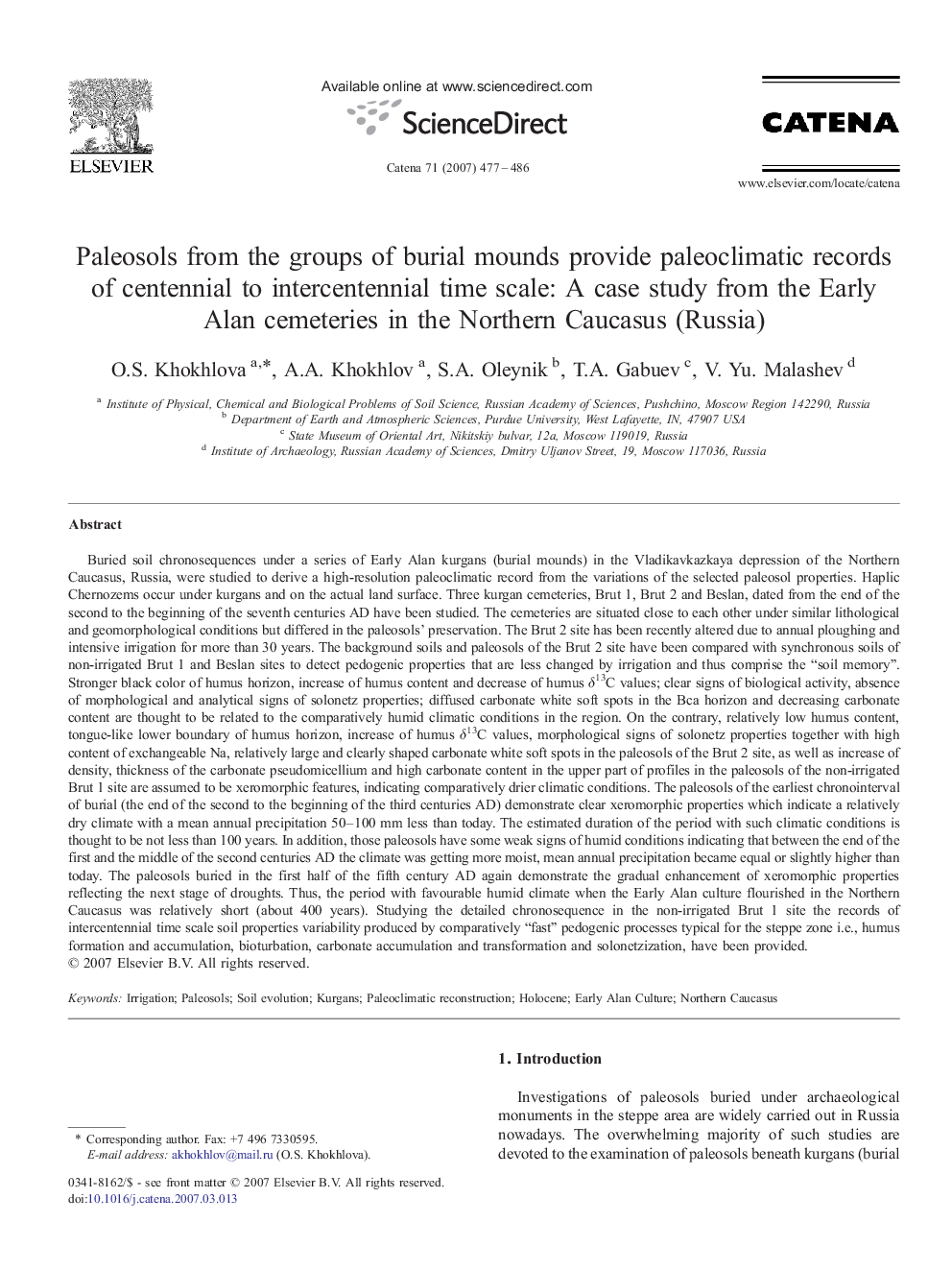| کد مقاله | کد نشریه | سال انتشار | مقاله انگلیسی | نسخه تمام متن |
|---|---|---|---|---|
| 4572595 | 1332186 | 2007 | 10 صفحه PDF | دانلود رایگان |

Buried soil chronosequences under a series of Early Alan kurgans (burial mounds) in the Vladikavkazkaya depression of the Northern Caucasus, Russia, were studied to derive a high-resolution paleoclimatic record from the variations of the selected paleosol properties. Haplic Chernozems occur under kurgans and on the actual land surface. Three kurgan cemeteries, Brut 1, Brut 2 and Beslan, dated from the end of the second to the beginning of the seventh centuries AD have been studied. The cemeteries are situated close to each other under similar lithological and geomorphological conditions but differed in the paleosols' preservation. The Brut 2 site has been recently altered due to annual ploughing and intensive irrigation for more than 30 years. The background soils and paleosols of the Brut 2 site have been compared with synchronous soils of non-irrigated Brut 1 and Beslan sites to detect pedogenic properties that are less changed by irrigation and thus comprise the “soil memory”. Stronger black color of humus horizon, increase of humus content and decrease of humus δ13C values; clear signs of biological activity, absence of morphological and analytical signs of solonetz properties; diffused carbonate white soft spots in the Bca horizon and decreasing carbonate content are thought to be related to the comparatively humid climatic conditions in the region. On the contrary, relatively low humus content, tongue-like lower boundary of humus horizon, increase of humus δ13C values, morphological signs of solonetz properties together with high content of exchangeable Na, relatively large and clearly shaped carbonate white soft spots in the paleosols of the Brut 2 site, as well as increase of density, thickness of the carbonate pseudomicellium and high carbonate content in the upper part of profiles in the paleosols of the non-irrigated Brut 1 site are assumed to be xeromorphic features, indicating comparatively drier climatic conditions. The paleosols of the earliest chronointerval of burial (the end of the second to the beginning of the third centuries AD) demonstrate clear xeromorphic properties which indicate a relatively dry climate with a mean annual precipitation 50–100 mm less than today. The estimated duration of the period with such climatic conditions is thought to be not less than 100 years. In addition, those paleosols have some weak signs of humid conditions indicating that between the end of the first and the middle of the second centuries AD the climate was getting more moist, mean annual precipitation became equal or slightly higher than today. The paleosols buried in the first half of the fifth century AD again demonstrate the gradual enhancement of xeromorphic properties reflecting the next stage of droughts. Thus, the period with favourable humid climate when the Early Alan culture flourished in the Northern Caucasus was relatively short (about 400 years). Studying the detailed chronosequence in the non-irrigated Brut 1 site the records of intercentennial time scale soil properties variability produced by comparatively “fast” pedogenic processes typical for the steppe zone i.e., humus formation and accumulation, bioturbation, carbonate accumulation and transformation and solonetzization, have been provided.
Journal: CATENA - Volume 71, Issue 3, 1 December 2007, Pages 477–486